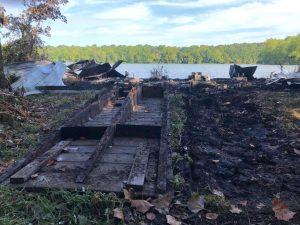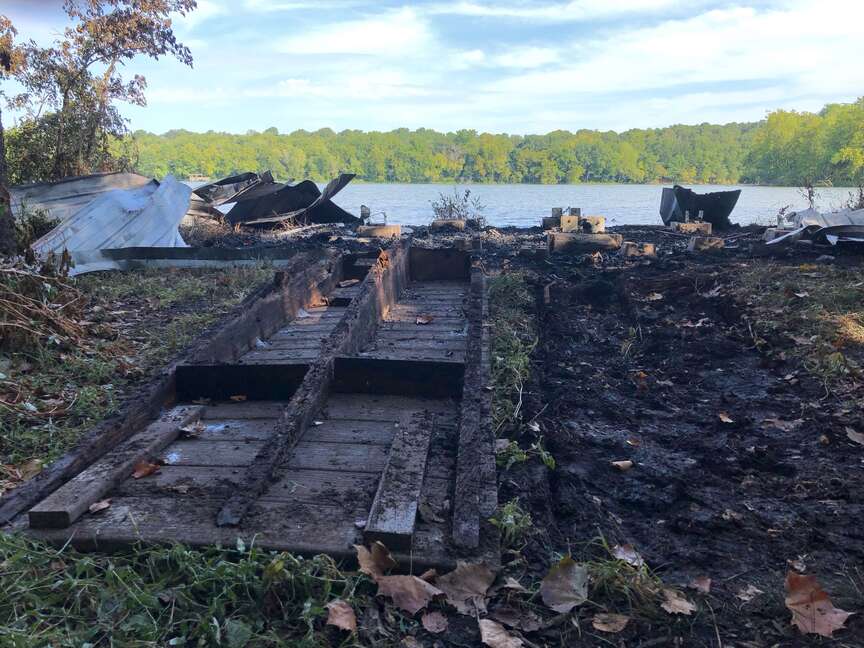The cherished bird blind at Lake Fayetteville, a symbol of community spirit and dedication, has been reduced to ruins following a devastating fire. This beloved structure, known as the Paige and Mary Bess Mulhollan Waterfowl Observation Blind, was a product of local volunteers’ hard work and generous donations, but now only remnants of it remain.
The wooden bird blind, situated along the southern shore of Lake Fayetteville, was designed with a gable roof and small windows for observing the diverse bird species visiting the lake. Located about half a mile from the Botanical Garden of the Ozarks and another parking area near Crossover Road, it was a place where nature enthusiasts could quietly enjoy the natural beauty of the area.

Built in 2016 after two years of fundraising by a group of passionate birders, the structure was named in honor of Paige and Mary Bess Mulhollan. Paige Mulhollan passed away in 2012, and Mary Bess Mulhollan followed in 2019. Both were active members of the Audubon Society and the botanical garden, and their legacy was reflected in this community project.
Kelly Mulhollan, who was responsible for the blind’s upkeep, discovered the tragic news of the fire through an email from the city’s Parks Department. The destruction was particularly shocking for him, as the blind had become a symbol of community care and pride. Despite minimal maintenance needs, the blind was always kept in good condition by its many visitors.
According to Battalion Chief Jeremy Ashley, firefighters responded to the blaze around 10:30 p.m. on Monday. Due to the location’s accessibility issues, they used a trail response vehicle to put out the flames, and no further damage was reported to the surrounding vegetation or trees. The cause of the fire remains undetermined, and no witnesses have come forward to provide details.
The loss of the blind is deeply felt among the birding community. Its creation involved significant volunteer efforts, including a memorable contribution from a university sorority group that transported lumber over a long distance. While there is no immediate plan for reconstruction, members of the Audubon Society are considering the possibility of erecting a new structure or a deck on the existing foundation.
The bird blind was more than just a viewing spot; it was a cornerstone of the local birding community, a place where enthusiasts gathered and enjoyed the natural environment. Its absence will be keenly felt, but its memory and the spirit of the volunteers who built it will continue to inspire.

